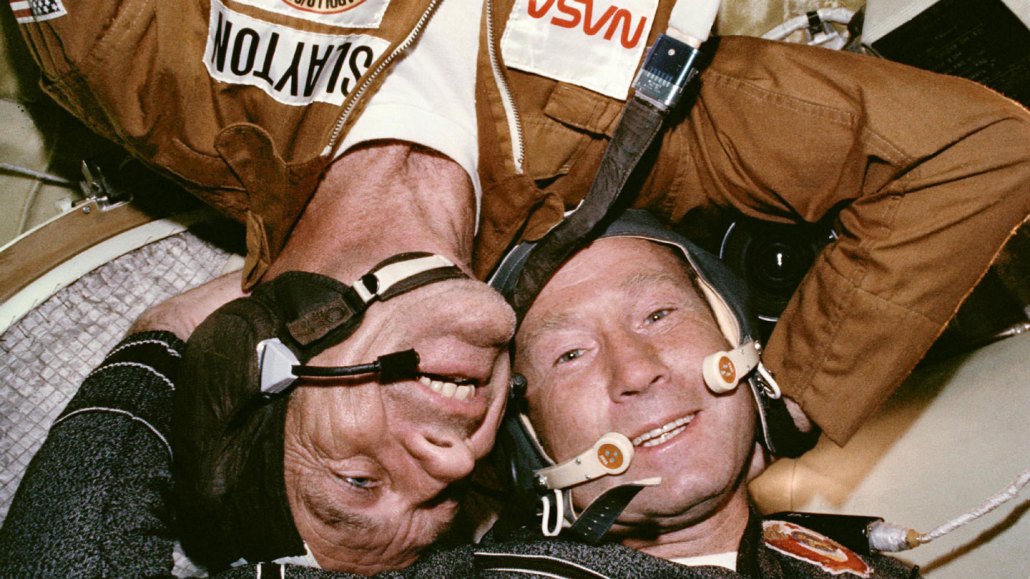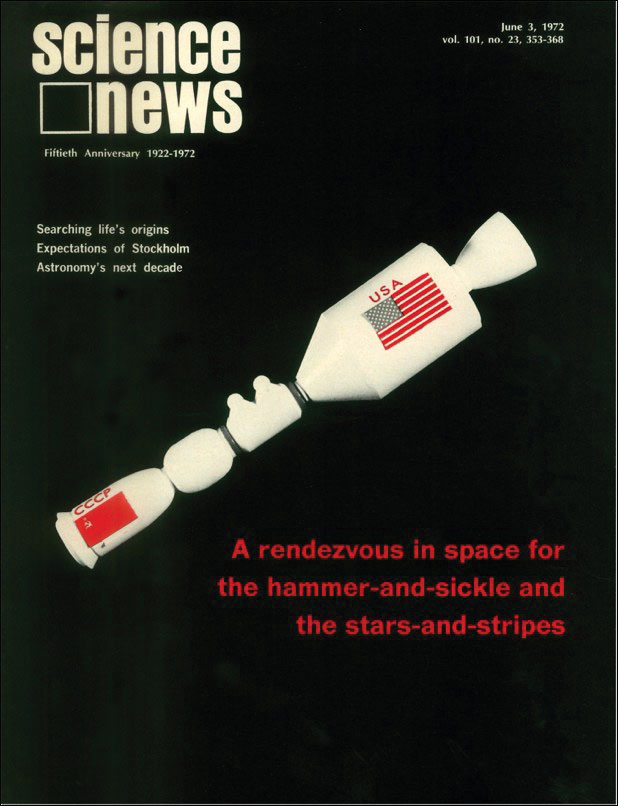50 years ago, the United States and Soviet Union joined forces for science
Excerpt from the June 3, 1972 issue of Science News

Astronaut Donald Slayton (left) embraces cosmonaut Aleksey Leonov (right) during the first international human spaceflight in 1975. That mission galvanized decades of scientific collaboration that continues today aboard the International Space Station.
NASA








